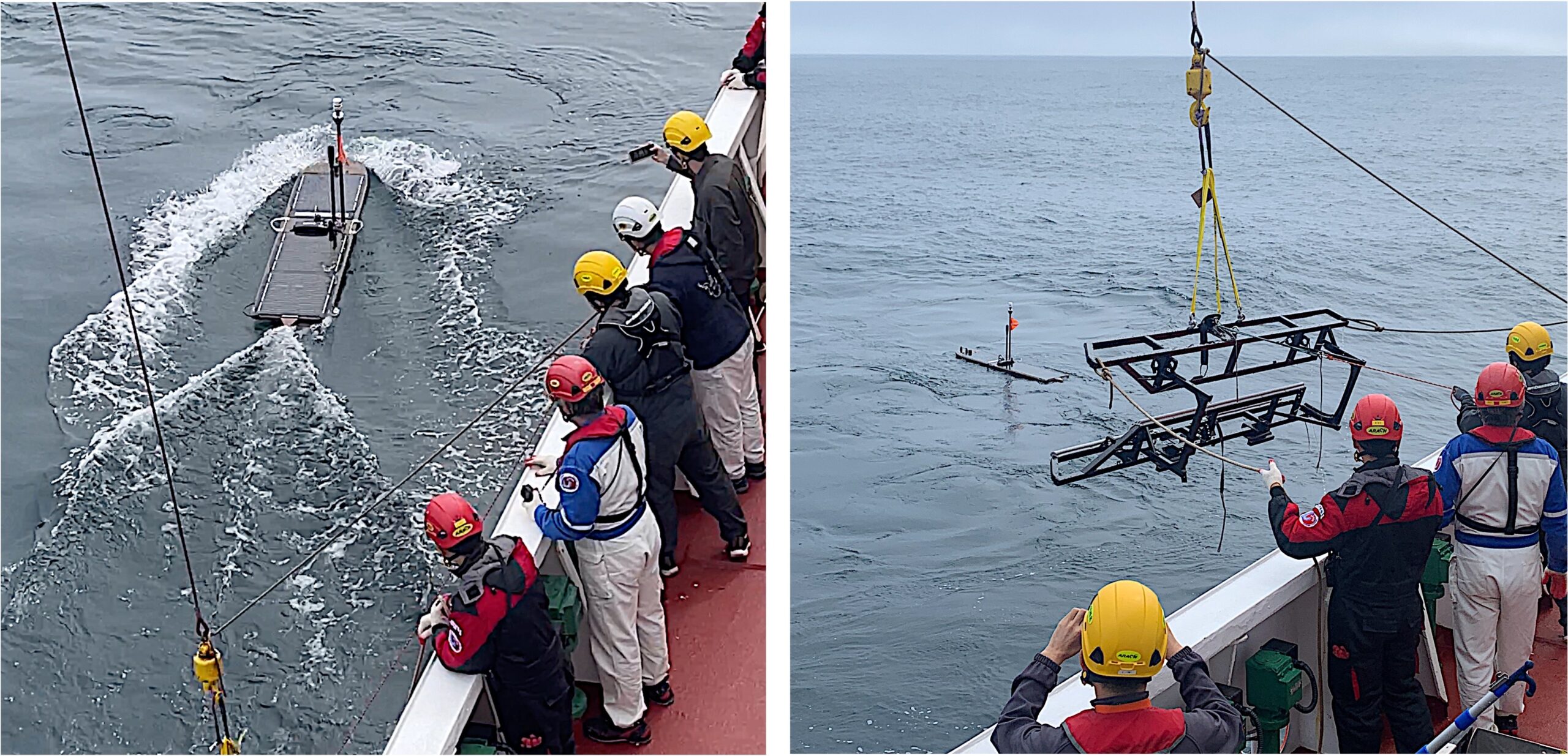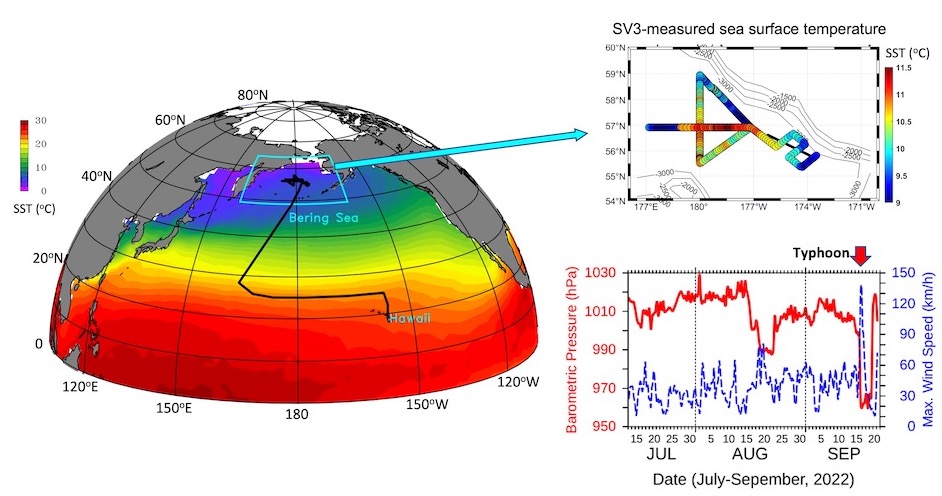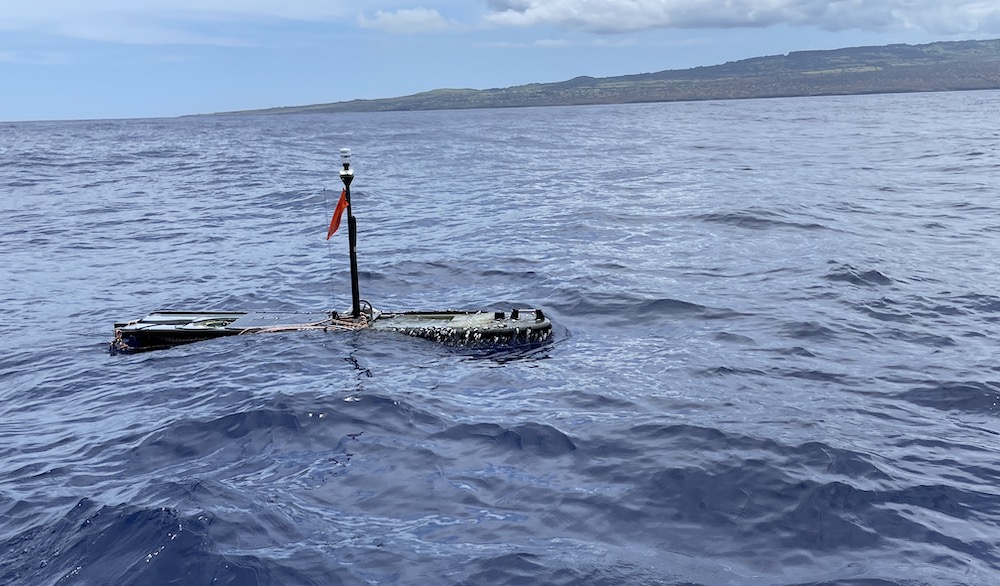Customer
Korea Institute of Ocean Science and Technology
Mission Location
Bering Sea
Highlights
- Successful completion of Bering Sea expedition, collecting ocean and atmospheric data from the Wave Glider and ocean-atmosphere buoys to understand air-sea interactions
- Wave Glider collects data in harsh weather and ocean conditions during Typhoon Merbok
- Wave Glider’s ability to facilitate ad-hoc change in mission plans, adding 8,000 km of unplanned journey
“Through this exploration, the Wave Glider has shown how it can handle unforeseeable situations while accomplishing its mission, and we will learn more about extreme marine events occurring around Korea.”
Ocean-Atmosphere Observations in the Bering Sea
Led by the Korea Polar Research Institute (KOPRI) and Korea Institute of Ocean Science and Technology (KIOST), the Bering Sea Comprehensive Ocean-Atmosphere Observation Program has successfully completed its 2022 Bering Sea expedition despite facing numerous challenges.
Supported by the Ministry of Oceans and Fisheries of the Republic of Korea, the program aims to identify rapidly changing environments in the Bering Sea and explore the relationship of marine heatwaves on the Korean Peninsula. Initiated in 2019, the ongoing research project consists of comprehensive observation and modeling efforts, including Wave Glider and ocean-atmosphere buoy timeseries measurements of the upper ocean variability and the interactions between ocean and atmosphere.

Wave Glider SV3 launched into the Bering Sea from R/V Araon in July 2022. Photo credit: KOPRI and KIOST.
Scientific Data Collection Before and During Typhoon Merbok
In July 2022, the team of researchers deployed the Wave Glider from the Korean icebreaker R/V Araon in the Bering Sea to begin a scheduled 3-month mission. For the following two months, the Wave Glider measured ocean temperature and salinity, ocean current velocity, and meteorological parameters to capture intense eddy activity and the strong Bering Slope Current along the outer continental shelf break of the Bering Sea. “By using autonomous observation platforms, we can extend our study scope beyond the Arctic Sea to the subarctic Bering Sea and get a better understanding of its far-reaching impacts” Dr. Taewook Park, Chief Scientist on the Araon Bering Sea expedition at KOPRI.
Fueled by unusually warm waters, Typhoon Merbok passed through the Bering Sea in mid-September, generating extreme weather conditions, including wave heights of over 10 meters, wind gusts of more than 120 km/h, and a minimum central barometric pressure of 937 mbar.
Directly in the typhoon’s path, the Wave Glider operated through the harsh weather conditions while collecting important research data of the Bering Sea. The data from these in-situ observations, as well as numerical modelling efforts, provide valuable insights into the air-sea interactions during severe storms, and the impact of rapidly changing climate on extreme weather conditions for the Korean Peninsula.

The Wave Glider recorded barometric pressure dropping to 960 hPa with winds reaching 140 km/h on 16 September as Typhoon Merbok approached. The Wave Glider completed its Bering Sea monitoring mission and traveled to Hawai‘i through the Aleutian Islands between July 2022 and April 2023. Source: KOPRI and KIOST.
Going the Distance: Next Stop Hawai‘i in 8,000 km
R/V Araon was scheduled to recover the Wave Glider in mid-September after the return from its Arctic Sea expedition. However, due to Typhoon Merbok and the associated weather and ocean conditions, R/V Araon was not able to reach the recovery location as planned. The alternative option to recover the Wave Glider in Guam also fell through due to scheduling issues. The team of researchers, along with operational support from Liquid Robotics, decided to reroute the Wave Glider to Liquid Robotics’ facility in Hawai‘i. Fast forward to April 2023 and over 8,000 km traveled, the Wave Glider was successfully recovered by the Liquid Robotics team in Hawai‘i and was brought back to shore for its well-deserved servicing.

Wave Glider recovery in Hawaiʻi in April 2023.